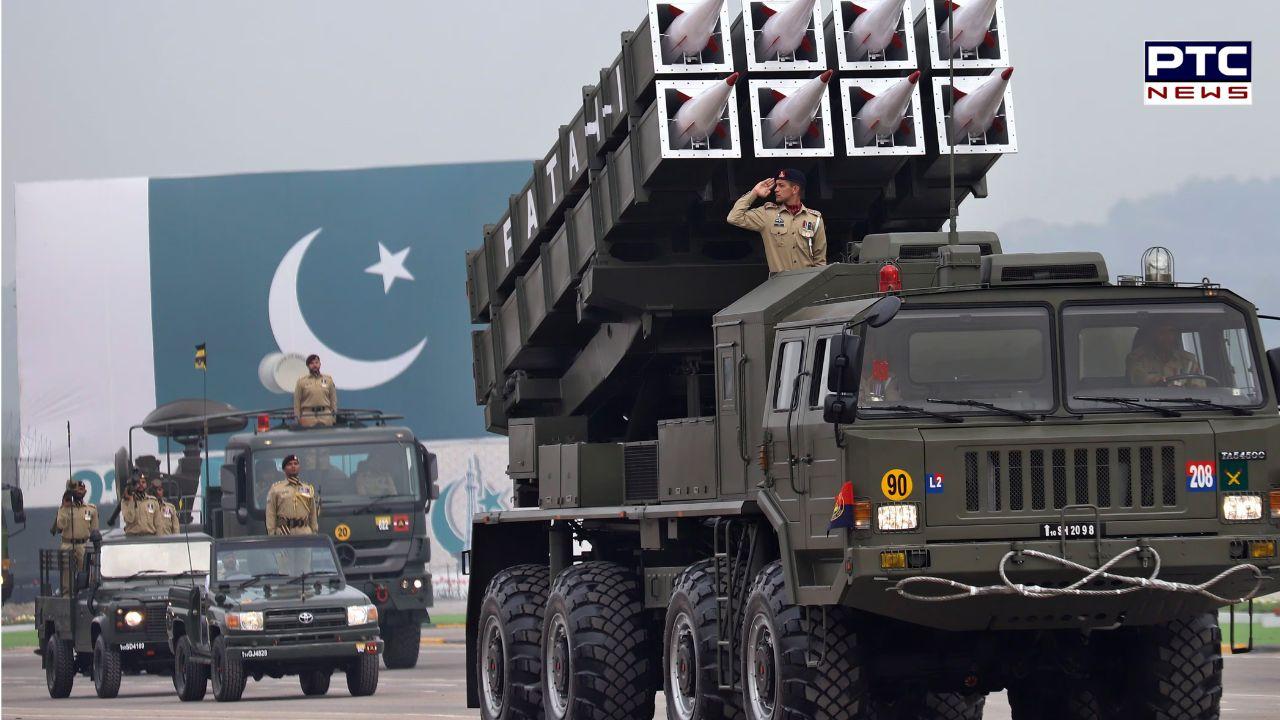

Pakistan ramps up nuclear arsenal, strengthens China ties amid strained ties with India and internal threats: US report
PTC Web Desk: The US Defense Intelligence Agency’s (DIA) 2025 Worldwide Threat Assessment notes that Pakistan is placing greater emphasis on enhancing its nuclear and conventional military capabilities, largely due to its long-standing view of India as its primary security threat. The report also highlights escalating regional tensions, Pakistan’s deepening strategic partnership with China, and increasing domestic instability.
According to the DIA, Islamabad sees New Delhi as a serious threat to its existence, and this belief still shapes Pakistan’s military plans and nuclear policy. In response to India’s conventional superiority, Pakistan has been accelerating the development of battlefield nuclear weapons and upgrading its strategic arsenal. As of 2024, Pakistan is estimated to possess approximately 170 nuclear warheads, with projections suggesting this could grow to 200 by 2025.
Notably, Pakistan adheres to a policy of nuclear first-use, in contrast to India’s declared “No First Use” doctrine. It is also placing greater emphasis on tactical nuclear weapons as a key element of its battlefield deterrence strategy.
The report also points to a deepening defense and economic partnership with China. Islamabad remains a key beneficiary of Chinese military aid and technology, conducting multiple joint exercises with the People’s Liberation Army (PLA), including a newly initiated air drill in November 2024. Pakistan’s weapons of mass destruction (WMD) programmes reportedly continue to rely heavily on foreign technology and materials, primarily sourced from China and transshipped via Hong Kong, Singapore, Turkey, and the UAE.
However, security threats to Chinese nationals working on the China-Pakistan Economic Corridor (CPEC) have strained bilateral ties. The killing of seven Chinese workers in 2024 underscores persistent vulnerabilities in Pakistan’s internal security framework.
Pakistan’s military remains engaged on multiple fronts, including managing frequent skirmishes along the border with India and battling growing insurgent activity from groups such as Tehrik-e-Taliban Pakistan (TTP) and Baloch separatist factions. Despite increased counterterrorism operations, over 2,500 people were killed in militant attacks in 2024 alone, highlighting the scale of the threat.
Nuclear modernisation continues to top Pakistan’s strategic agenda, with a particular focus on missile development and delivery systems to reinforce its deterrence posture.
Escalation with India: Operation Sindoor
Regional volatility escalated sharply following a deadly terrorist attack in Pahalgam, Jammu and Kashmir, on April 22, 2025, which left 26 civilians dead. In response, India launched “Operation Sindoor” on May 7, targeting terror infrastructure in Pakistan and Pakistan-administered Kashmir.
The four-day conflict saw intense combat involving drones, precision-guided missiles, and cross-border artillery strikes, concluding in a ceasefire on May 10. The DIA report notes Pakistan’s operational deployment of Chinese-supplied platforms, including JF-17 and J-10C fighter jets, armed with PL-15 air-to-air missiles.
Beyond its security concerns, Pakistan continues to grapple with severe economic pressures. The country’s $350 billion economy remains under duress, though a $7 billion loan agreement with the International Monetary Fund (IMF) in 2024 has provided temporary fiscal relief. Nevertheless, persistent inflation, energy shortages, and low investor confidence continue to hamper recovery efforts.
- With inputs from agencies
